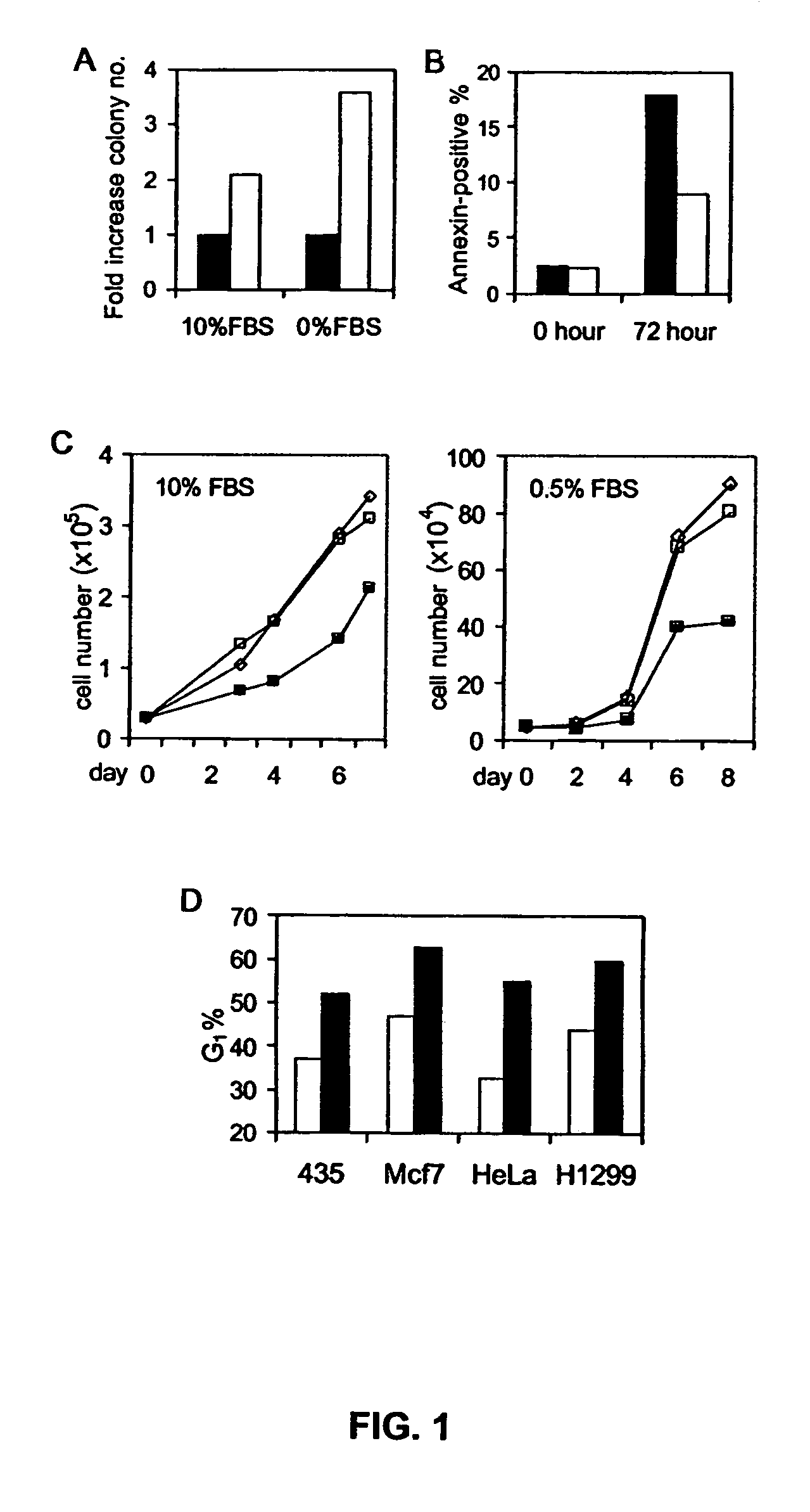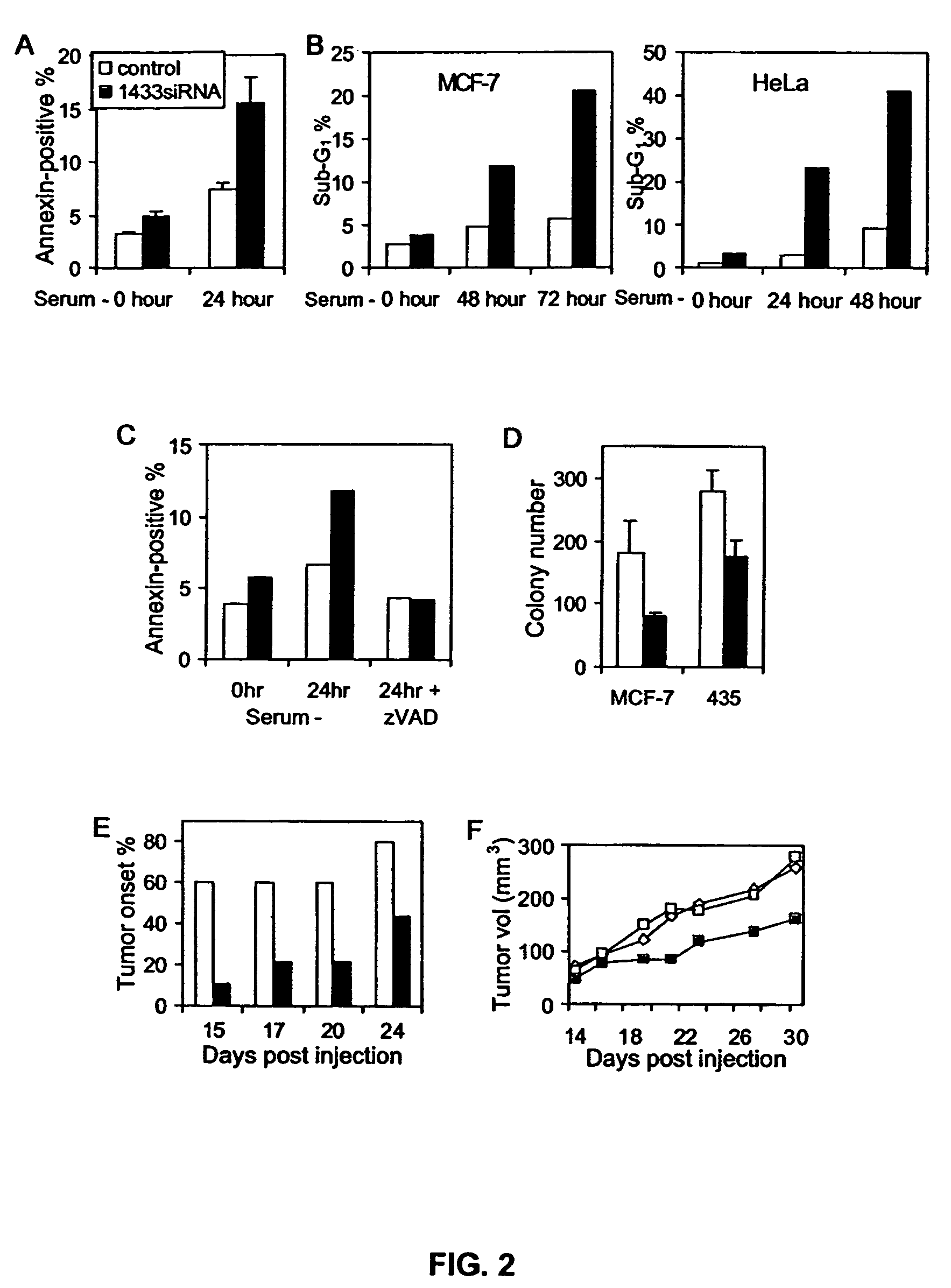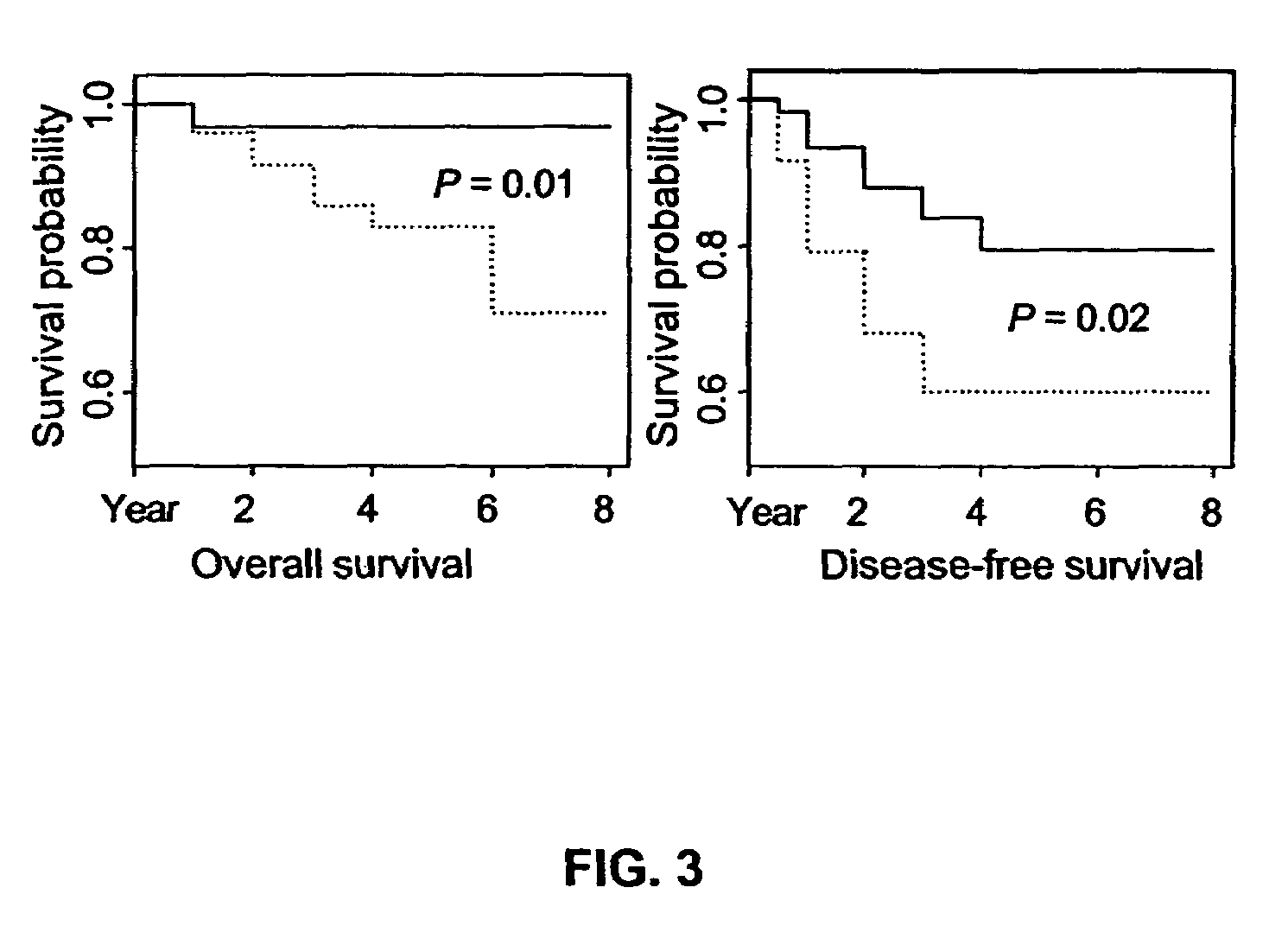14-3-3 zeta over-expression as a poor prognosis factor, and a therapeutic target in multiple cancer types
a technology of zeta and overexpression, which is applied in the field of cancer biology and molecular biology, can solve the problems of lacking ideal prognostic factors for breast cancer, and achieve the effects of improving the survival rate of breast cancer, improving the survival rate, and improving the survival ra
- Summary
- Abstract
- Description
- Claims
- Application Information
AI Technical Summary
Benefits of technology
Problems solved by technology
Method used
Image
Examples
example 1
Materials and Methods
[0225]RNA interference of 14-3-3 zeta in mammalian cell culture. siRNA duplexes were synthesized based on a 14-3-3 zeta-specific sequence (SEQ ID NO:3) and a scrambled sequence (SEQ ID NO:4) by Darmacon Research Inc., CO. One million cells were seeded onto a 10-cm culture dish 24 hr prior to transfection in DMEM / F12 containing 10% FBS. 50 μl of siRNA duplexes (20 μM stock) were added to 750 μl Opti-MEM I (Invitrogen) containing 20 μl Plus Reagent (Invitrogen), mixed and incubated for 15 min at room temperature. Then 30 μl Lipofectamine (Invitrogen) was mixed and incubated with 750 μl Opti-MEM I. After incubation, two parts were mixed and incubated for another 15 min at room temperature. This combination was then assorted with 5 ml Opti-MEM I and added to cells that were pre-washed once with 5 ml Opti-MEM I. Five hours post-transfection, 6.5 ml of DMEM / F12 with 20% FBS were added to the cells. The transfection solution was removed 24 hours post-transfection and r...
example 2
14-3-3 Zeta Expression is Elevated in Sarcomas and Primary Breast Cancer
[0229]A 29 kDa protein (p29) with a polyclonal anti-p16 antibody was detected in the sarcoma and primary breast cancer tissue specimens, presumably due to cross-reaction. Western blot analysis using anti-p16 antibody (which recognized p29) was performed in more than 50 soft tissue sarcoma samples. Interestingly, p29 expression was elevated in 60-70% of the sarcomas as well as in more than 70% primary breast tumors compared with autologous normal tissues. The p29 protein from a sarcoma specimen was purified to homogeneity. The p29 was purified by three steps: (a) preparative SDS-PAGE followed by gel extraction, (b) hydrophobic interaction chromatography, and (c) preparative HPLC. Purified p29 migrated as a single band of 29 kDa in a SDS-PAGE gel when stained by Coommassie blue. Microsequencing of in-gel digestion fragments of purified p29 revealed it as a known protein, 14-3-3 zeta. The identification was confirm...
example 3
14-3-3 Zeta is Expressed in Multiple Tumor Types
[0230]IHC analysis of 14-3-3 zeta on a Tissue Array was conducted, which confirmed that 14-3-3 zeta was overexpressed in breast carcinoma. In addition, 14-3-3 zeta overexpression was detected in cancers of lung, liver, uterus, and stomach compared to their respective normal tissues. The tissue array slide from IMGENEX (cat# IMH-343 / BA2) has 20 normal tissues and 19 different types of tumors (each tumor has one care) from human origin. The normal tissues include skin, breast, spleen, skeletal muscle, lung, liver, gallbladder, pancreas, stomach, small intestine, colon, rectum, kidney cortex, kidney medulla, bladder, prostate, uterus, placenta, umbilical cord, and fetal brain. The tumors include squamous cell carcinoma of the lung, bronchioloalveolar carcinoma of the lung, adenoid cystic carcinoma of the salivary gland, hepatocellular carcinoma, diffuse type adenocarcinoma of the stomach, intestinal type adenocarcinoma of the stomach, str...
PUM
| Property | Measurement | Unit |
|---|---|---|
| molecular weight | aaaaa | aaaaa |
| mass | aaaaa | aaaaa |
| mass | aaaaa | aaaaa |
Abstract
Description
Claims
Application Information
 Login to View More
Login to View More - R&D
- Intellectual Property
- Life Sciences
- Materials
- Tech Scout
- Unparalleled Data Quality
- Higher Quality Content
- 60% Fewer Hallucinations
Browse by: Latest US Patents, China's latest patents, Technical Efficacy Thesaurus, Application Domain, Technology Topic, Popular Technical Reports.
© 2025 PatSnap. All rights reserved.Legal|Privacy policy|Modern Slavery Act Transparency Statement|Sitemap|About US| Contact US: help@patsnap.com



